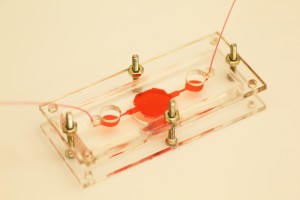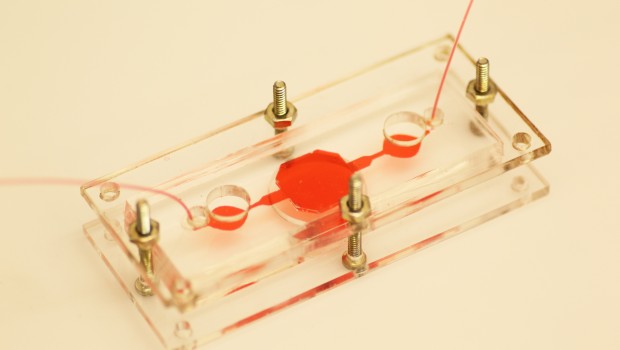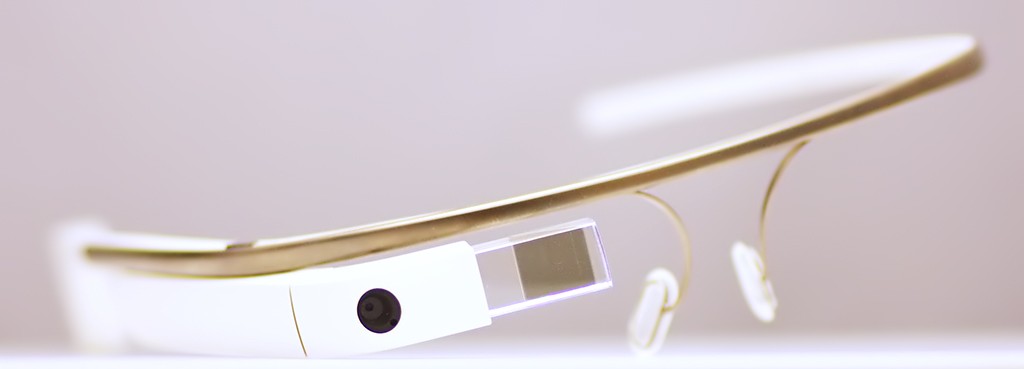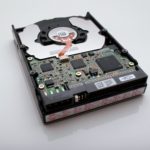Google Glass works with Organs-on-Chips
Organs-on-chips is one of the most efficient testing platforms for treatment drugs. The chips are constructed to mimic human functionalities more closely than conventional experiment platforms like animal testing and planar, static in vitro designs. Organs built with circuits also provide other practicalities, such as easy data collection.

Organs-on-chips are built to mimic human organs and their functionalities. Credit: Brigham and Women’s Hospital.
Accessing data can be achieved in a variety of way, typically through a desktop or a mobile. However, there are cases where researchers may wish for hands-free access, like in the case of continuous monitoring. This is where using wearables such as Google Glass can come in handy.
Recently, a team led by Ali Khademhosseini at the Brigham and Women’s Hospital (BWH), a major teaching hospital of Harvard Medical School, successfully integrated a set of software, hardware, and Google Glassware to work with Organs-on-chips.
One feature unique to Khademhosseini’s platform is it not only lets users monitor real-time data but also interact with chip controls, without ever having to go near it.
As the researchers indicated, this can be very useful for scenarios where the tested drug is highly toxic, or if there are contagious bacteria involved in the process. It is “of particular importance in cases where experimental conditions threaten human life,” said Yu Shrike Zhang, lead author of the mentioned report.
Designed for interaction
The team built a Linux board consisting of biosensors, a temperature sensor, a pH electrode, and a miniature microscope using a webcam, which is used to collect images and videos. They also implemented a gating mechanism for the microfluidic system by mounting electrovalves on the chip, which can be opened and closed individually. In the backend, data from the sensors is transmitted directly to the Google App Engine and stored in Google Cloud.
For a Glass-integrated heart-on-a-chip system, for instance, a straight-forward procedure of saying “ok glass” and swiping will give the user access to Live Cards that allow them view pH and temperature values, videos of the cells, and plots of the beating patterns. One particular Live Card allows the user to change the status of each of the valves to an on or off position. The organoid periodically senses for these changes in the Google App Engine and makes appropriate shifts in its circuitry. This, in turn, changes the flow amount or direction of microfluidics that “enter an organ.”
Putting Google Glass to the test
In one test, Dr. Khademhosseini’s group injected a known hepatotoxin to a reservoir in a liver-on-a-chip, by commanding Google Glass to activate and deactivate the electrovalves. Initial imaging showed that the organoid was healthy and tightly structured, but 12 hours post-drug injection, the mini-microscope revealed swollen cellular structures on the chip – a sign of toxic response. Biosensor data also confirmed decreased liver functionalities.
As the authors wrote, the experiments showed that Google Glass can independently and remotely control the testing procedure from operation of valves, injection of drug, restoration of perfusion, and monitoring of morphology. Dr. Zhang said their current design can be easily fitted to current organs-on-chips in the market.
Google Glass may also be used for a clinical environment, which “was actually the initial use,” said Dr. Zhang. Clinical trial monitoring can be achieved using built-in video cameras that store the data onto local drives.
“We believe such a platform has widespread applications in biomedicine, and may be further expanded to health care settings where remote monitoring and control could make things safer and more efficient,” Dr. Khademhosseini said. These efforts will undoubtedly facilitate researchers in their ongoing endeavor for pharmaceutical cures.












